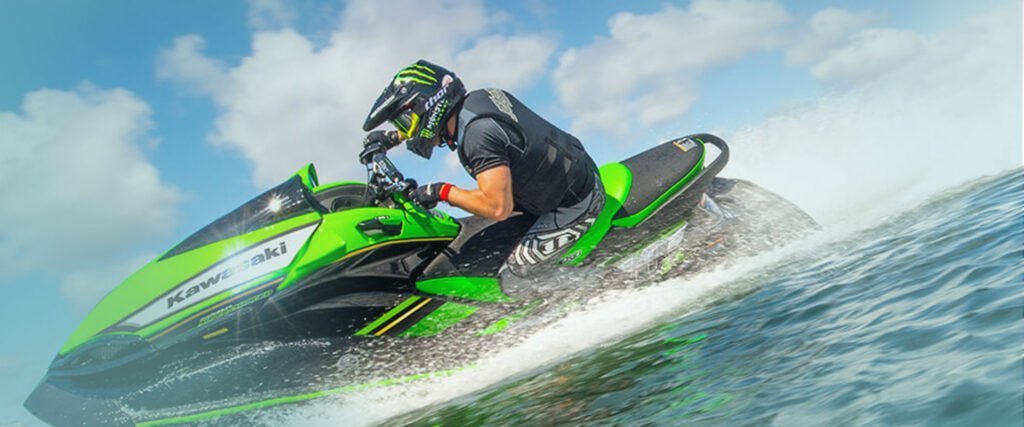Deciding which jet ski brand is “better” among Sea-Doo, Yamaha, and Kawasaki ultimately depends on individual preferences, specific models, and the intended use. Each brand has its own strengths and considerations:
Sea-Doo:
Pros:
Innovative Technology:
Sea-Doo is known for its cutting-edge technology and continuous innovation. They often introduce industry-leading features.
Versatility:
Sea-Doos offer a wide range of models suitable for various water activities, and they come with customization options.
Performance:
Sea-Doos are recognized for their powerful engines, providing strong acceleration and maneuverability.
Comfort and Ergonomics:
Many Sea-Doo models are praised for their comfortable seating and user-friendly controls.
Cons:
Price:
Sea-Doo jet skis can be relatively expensive compared to other brands.
Yamaha:
Pros:
Reliability:
Yamaha is renowned for producing highly reliable and durable jet skis known for their longevity and low maintenance requirements.
Fuel Efficiency:
Yamaha jet skis are often praised for their fuel efficiency, offering economical operation.
Stability:
Yamaha models are known for their stable and predictable handling, which can be beneficial for beginners and those seeking a more relaxed ride.
Resale Value:
Yamaha jet skis tend to retain their value well in the used market.
Cons:
Less Customization:
Yamaha jet skis may have fewer aftermarket customization options compared to some Sea-Doo models.
Innovations:
While Yamaha makes high-quality jet skis, they may introduce new technologies at a more conservative pace.
Kawasaki:
Pros:
Powerful Engines:
Kawasaki jet skis are often known for their powerful engines and high performance.
Stability and Handling:
Kawasaki models are praised for their stable and responsive handling on the water.
Cons:
Less Diversity in Models:
Kawasaki may offer fewer models compared to Sea-Doo and Yamaha, providing fewer options for different preferences and activities.
Potentially Higher Maintenance:
Some models may require more maintenance compared to competitors.
Ultimately, the “best” jet ski brand depends on your specific needs, preferences, and priorities. It’s recommended to test ride models from all three brands and consider factors such as performance, features, comfort, and budget before making a decision. Additionally, reading reviews and seeking advice from experienced jet ski enthusiasts can provide valuable insights.
Is a higher liter engine better?
Not necessarily. The size of an engine, measured in liters, is just one factor among many that determine its performance and suitability for a particular application. Here are some key points to consider:
1. Power Output:
Generally, larger engines have the potential to produce more power. However, this is not a strict rule. The design, technology, and tuning of an engine play a crucial role in determining its power output.
2. Fuel Efficiency:
Smaller engines tend to be more fuel-efficient, especially when they are designed with advanced technologies like turbocharging or hybrid systems. Larger engines may consume more fuel, although this can also depend on the specific design and technology used.
3. Weight:
Larger engines tend to be heavier, which can affect the overall weight and balance of the vehicle or equipment they’re installed in. This can have implications for handling, stability, and fuel efficiency.
4. Cost:
Larger engines often come with a higher price tag, not only for the initial purchase but also potentially for maintenance, repairs, and fuel costs.
5. Application:
The ideal engine size depends on the intended use. For example, a small, fuel-efficient engine might be perfect for a compact car focused on urban commuting, while a larger, more powerful engine might be necessary for towing heavy loads or high-performance vehicles.
6. Emissions and Regulations:
Larger engines can sometimes face more stringent emissions regulations, which can affect their availability and cost.
7. Environmental Impact:
In general, smaller, more fuel-efficient engines tend to have a lower environmental impact in terms of greenhouse gas emissions and overall resource consumption.
8. Torque:
Torque is an important consideration, especially for applications that require pulling power, like towing or off-road driving. Engine size can influence the available torque.
Ultimately, the “best” engine size depends on the specific requirements of the vehicle or equipment, as well as the preferences and priorities of the owner or operator. It’s important to consider factors like intended use, fuel efficiency, power needs, and environmental impact when choosing an engine.




